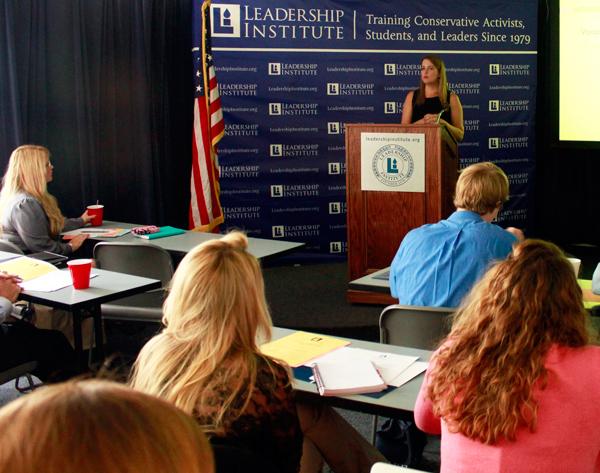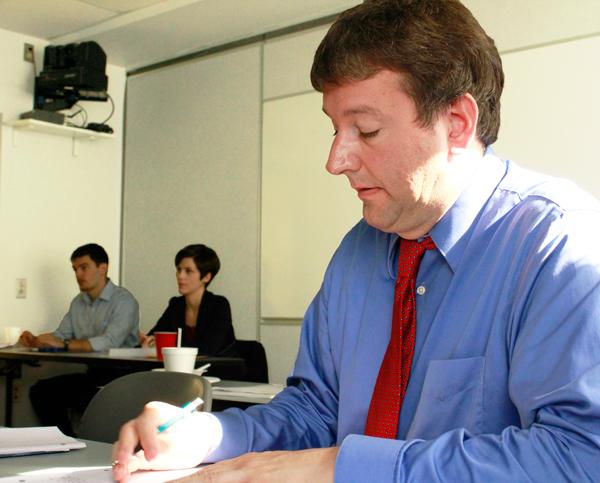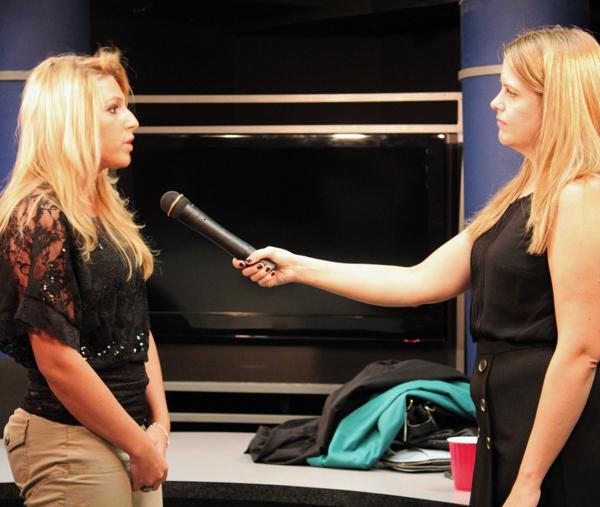These were basic principles of the last Friday’s Introduction to Television Techniques Workshop taught by Beverly Hallberg at the Leadership Institute.

The 16 students learned to effectively communicate via broadcast media: what to wear, how to present themselves, and the type of language to use. Many students came away with the same observation: it’s the little things that make a difference.
Nicole Hudgens, an intern with the Young Leaders Program at The Heritage Foundation, remarked, “I’ve had a lot of communication classes since it’s what I got my degree in, but this covered some things I had not heard before and I really enjoyed it! Beverly gave great practical advice and I’d love to go to another workshop.”
In general, keep it snappy. TV and radio are made for soundbites, not lectures. Viewers listening to a dialogue will stay far more engaged than those listening to a monologue. Plus, you’re more likely to be invited back when the host feels like they control the conversation.
 Live interviews are the easiest to control. Whatever is said airs—not the case with recorded interviews. When recorded, your comments are at the mercy of the segment’s producer: important statements might get cut because you gave them too much material.
Live interviews are the easiest to control. Whatever is said airs—not the case with recorded interviews. When recorded, your comments are at the mercy of the segment’s producer: important statements might get cut because you gave them too much material.
For a pre-recorded interview, make sure comments are prepared in advanced. The rules change entirely; you have no control over what is aired, but you are in complete control of your answers. Questions are not typically broadcast, so answering the question is non-essential.
Regardless of the type of interview, Beverly cautioned, “Anticipate what you will be asked. Prepare your ammo correctly.”
It’s essential to practice and prepare statements; even the most knowledgeable person can forget their main points when asked an unexpected question.
After receiving these tips (and many more—register for LI’s TV training here for all of them), attendees practiced their skills on the camera.

Beverly went through and critiqued each person’s performance. Everyone stepped in front of the camera for a second time, and each person’s improvement was dramatic.
Those who were long-winded initially became succinct. The quiet people became more assertive and appeared confident. Everyone was empowered to be an effective communicator for their chosen topic.
Megan Moore, an intern at the Leadership Institute’s ConservativeJobs.com, observed, “It was incredible to see how quickly everyone improved. Most of us were not engaging the first time. In ‘take two,’ we were all persuasive and followed Beverly’s rules.”
If you want to learn and practice what it takes to be an effective on-camera spokesperson, register for our next Television Workshops on December 14. Or, register for one of LI’s other upcoming trainings here.
